The recovery time for a sprained knee ranges from 1 to 2 weeks for a mild (Grade 1) sprain to several months for a severe (Grade 3) sprain involving a complete ligament tear. This guide explains the factors that influence your healing timeline, such as the specific ligament injured and the grade of the sprain. We will also cover initial treatment steps, when to see a doctor, and how to prevent re-injury.
Key Takeaways
-
Knee sprains are classified into three grades, with recovery times ranging from 1-2 weeks for mild sprains to several months for severe sprains.
-
Recovery time for a knee sprain is influenced by factors like age, overall health, and the specific ligament injured.
-
Initial care follows the RICE method (Rest, Ice, Compression, Elevation), and it’s crucial to seek medical attention for severe symptoms or if improvement isn’t seen.
What Is a Knee Sprain?
A knee sprain occurs when the ligaments that support your knee joint are stretched too far or torn. This injury often happens after a sudden twist, awkward landing, or direct impact.
According to the Cleveland Clinic, ligaments are tough, rope-like bands of tissue that connect bones and help joints move only in the directions they are supposed to.
Understanding that a sprain is a ligament injury, not one to muscle or bone, is critical for applying the correct treatment and setting realistic recovery expectations.
What Are the Types and Grades of Knee Sprains?
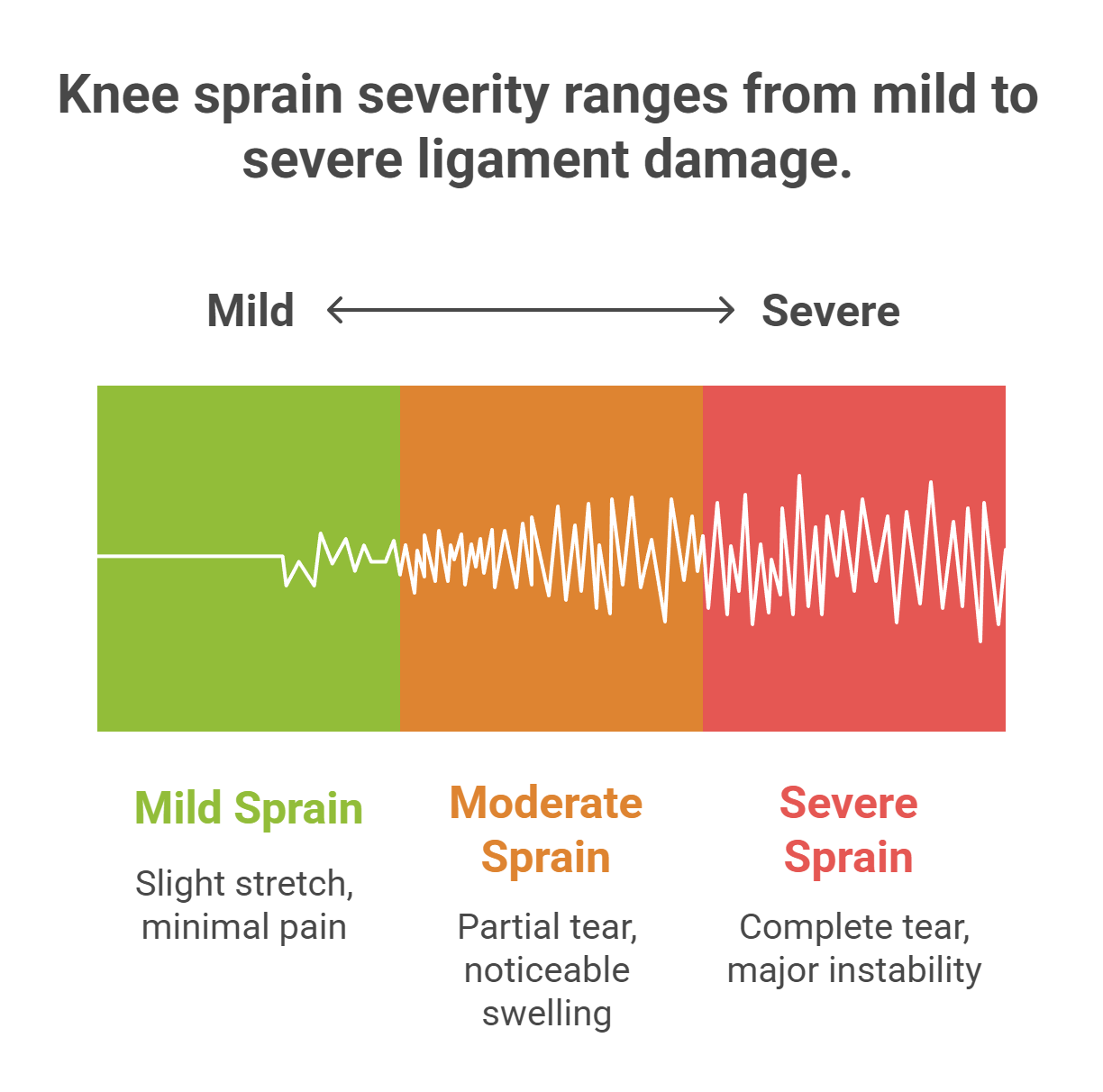
The four primary ligaments in the knee include:
-
Medial Collateral Ligament (MCL): runs along the inside of the knee
-
Lateral Collateral Ligament (LCL): located on the outer side of the knee
-
Anterior Cruciate Ligament (ACL): in the center, controls forward motion of the tibia
-
Posterior Cruciate Ligament (PCL): controls backward motion of the tibia
While any of these ligaments can be sprained, MCL and ACL sprains are most common, especially among athletes in sports that involve cutting, pivoting, and jumping, such as basketball, football, and soccer.
Knee sprains are classified into three grades depending on how much the ligament is damaged. Understanding the severity helps determine the proper treatment and recovery timeline.
Grade 1: Mild Knee Sprain
A Grade 1 knee sprain is a mild injury where a ligament is slightly stretched, resulting in microscopic tears to fewer than 10% of its fibers.
This type of sprain causes mild pain, slight swelling, and minimal stiffness, but the knee joint remains stable and can typically bear full weight.
Most individuals with a Grade 1 sprain recover fully within 1 to 2 weeks using conservative treatment like the RICE method, and no significant medical intervention is usually required.
What to Expect:
-
Mild pain, slight swelling, and minimal stiffness
-
Full weight-bearing is usually possible
-
Knee stability remains intact
Grade 2: Moderate Knee Sprain
A Grade 2 sprain is a moderate injury involving a partial tear of the ligament, which causes more pronounced symptoms and joint instability. Sufferers typically experience noticeable swelling, bruising, and pain while walking or bearing weight, often with a feeling of looseness in the joint.
Recovery for a Grade 2 sprain typically takes 3 to 6 weeks, according to Harvard Health and WebMD. For example, a 2019 study on collegiate athletes published in the Journal of Athletic Training found that ACL sprains occur at a rate of 0.11 to 0.17 per 1,000 athletic exposures, underscoring the need for tailored recovery plans.
Treatment focuses on restoring mobility and strength through several key methods:
-
Bracing to support the joint and protect it from further injury.
-
Physical therapy to rebuild strength, flexibility, and range of motion.
-
Activity modification to avoid movements that stress the healing ligament.
What to Expect:
-
Noticeable swelling and bruising
-
Pain while walking or bearing weight
-
Some instability in the joint
Grade 3: Severe Knee Sprain
A Grade 3 sprain is a severe injury involving a complete tear, or rupture, of the ligament. This injury causes severe pain, significant swelling, and major joint instability, often making it impossible to bear weight and creating a feeling of the knee "giving out."
Recovery is extensive and can take 8 to 12 weeks or longer, according to Cleveland Clinic and WebMD. Surgical intervention is often required, especially for complete ACL ruptures, and post-surgery rehabilitation can take an additional six to twelve months to restore full function.
What to Expect:
-
Severe pain, swelling, and joint instability
-
Difficulty or inability to walk
-
A feeling of the knee "giving out" during movement
What Is the Recovery Timeline for Each Grade of Sprain?
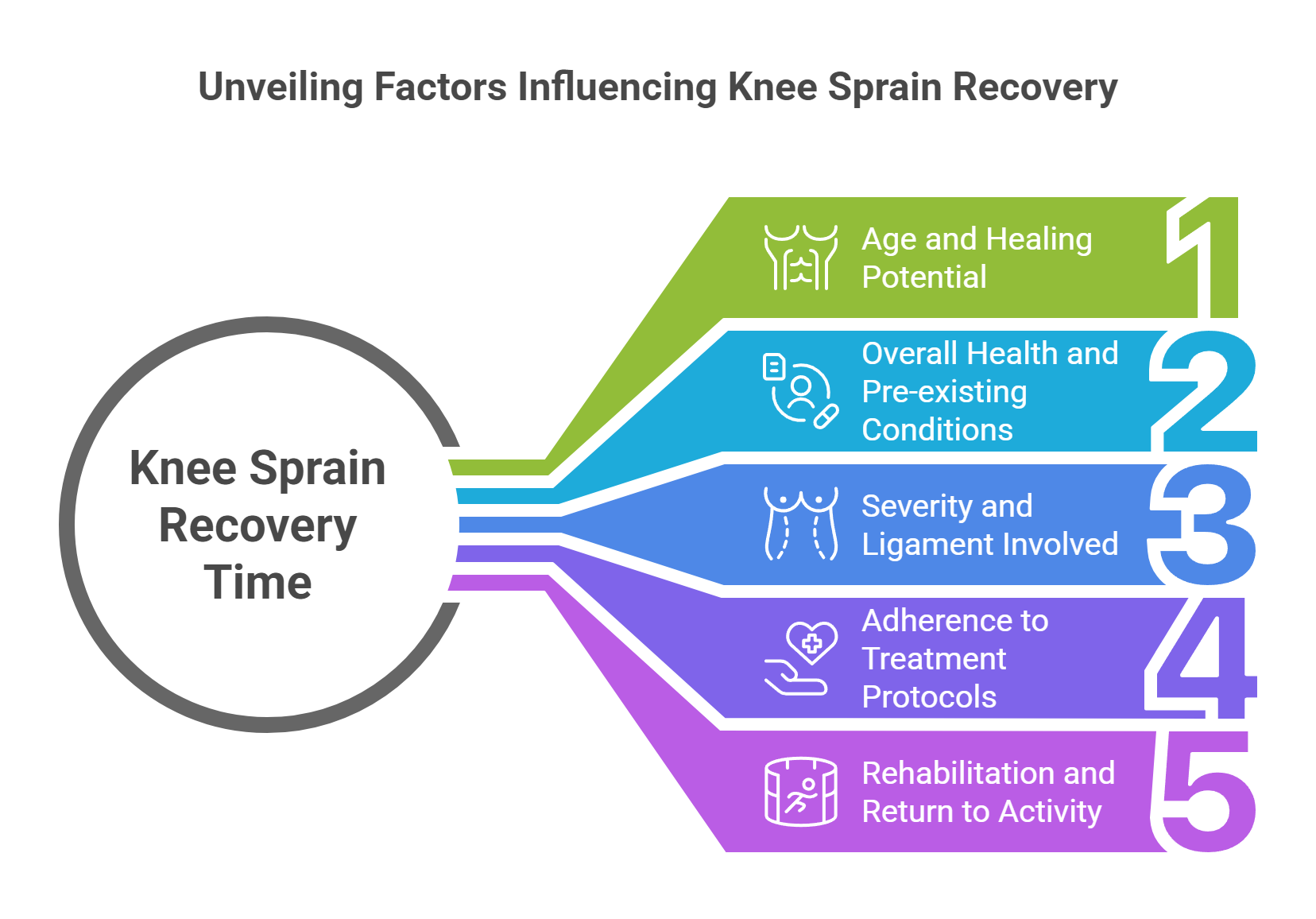
Recovery from a knee sprain depends mainly on the severity (grade) of the injury, the specific ligament involved, and the individual’s overall health and activity level. Proper treatment and adherence to rehab can significantly influence how quickly someone returns to full function.
Grade 1 (Mild) Knee Sprain
These involve slight ligament stretching with minimal fiber damage. According to Harvard Health Publishing, most Grade 1 sprains heal within 1 to 3 weeks.
-
Mild swelling and discomfort are common.
-
Weight-bearing is usually possible.
-
RICE (Rest, Ice, Compression, Elevation) is typically sufficient (This is the most straightforward type to treat and recover from)
Grade 2 (Moderate) Knee Sprain
A partial tear of the ligament causes more pain, swelling, and some joint instability.
-
Recovery typically takes 3 to 6 weeks, according to Harvard Health and WebMD.
-
Bracing and physical therapy are often needed to restore mobility and strength.
-
Activity modification is key to preventing further damage during healing.
Adherence to treatment plays a significant role in timely recovery.
Grade 3 (Severe) Knee Sprain
This involves a complete rupture of the ligament and often requires surgical repair.
-
Recovery can take 8 to 12 weeks or longer, according to Cleveland Clinic and WebMD.
-
Crutches, immobilization, and a structured rehab program are typically required.
-
Surgical cases may take several additional months, depending on complications and the ligament involved.
Even without surgery, severe sprains need consistent follow-up and physiotherapy for optimal recovery.
What Factors Affect Knee Sprain Recovery Time?
The recovery time for a sprained knee depends on several key factors, including individual health status and the specific nature of the injury. While most knee sprains heal within 1 to 12 weeks, full recovery can take longer in more complex or severe cases, particularly when the ligament is completely torn.
1. Age and Healing Potential
Younger individuals typically recover faster because of stronger tissue regeneration. A study published in The American Journal of Sports Medicine found that adolescents have significantly more CD34+ progenitor cells in their ACL tissue, which are crucial for healing. Compared to older patients, teens demonstrated greater cell proliferation, better bone-forming activity, and improved blood vessel development, all of which support a faster and more complete healing process.
2. Overall Health and Pre-existing Conditions
Chronic health issues such as diabetes, obesity, or vascular problems can delay recovery. These conditions impair circulation and inflammation control, making it harder for the body to manage swelling and tissue repair, which increases overall recovery time.
3. Severity and Ligament Involved
The specific ligament injured plays a significant role in how long recovery takes. For example, damage to the anterior cruciate ligament (ACL), especially a complete tear, often requires surgical reconstruction followed by six to twelve months of rehabilitation. In contrast, a mild medial collateral ligament (MCL) sprain may heal within just a few weeks.
4. Adherence to Treatment Protocols
Following your medical professional’s recommendations is essential. Using the RICE method, engaging in manual therapy, and performing resistance exercises consistently can speed up recovery time from a knee injury. Returning to activity too early can cause setbacks and increase the risk of reinjury.
5. Rehabilitation and Return to Activity
Structured physical therapy not only helps regain strength and mobility but also prevents future sprains. Athletes aiming to return to sports need to reintroduce movement gradually. Signs such as pain or instability, especially on the inner side of the knee, should be closely monitored to avoid complications during recovery.
How Should You Initially Treat a Sprained Knee?
The first step in treating a sprained knee is to follow the RICE method: Rest, Ice, Compression, and Elevation. These steps are widely recommended by medical professionals to help manage pain, control swelling, and support early healing.
-
Rest the knee by avoiding weight-bearing activities. Giving your body time to heal is essential to prevent further injury.
-
Ice the area for 10 to 20 minutes several times a day. Cold therapy helps reduce inflammation and numb the pain.
-
Compression using an elastic bandage or support wrap helps limit swelling by applying gentle, consistent pressure.
-
Elevation involves raising the knee above heart level to slow blood flow and reduce swelling and discomfort.
Once these initial steps are in place, it’s essential to protect and stabilize the knee throughout the healing process.
That’s where the Anaconda Knee Brace comes in.
Designed for comfort and medical-grade support, the Anaconda brace helps limit excessive movement, improve joint stability, and accelerate recovery time. Whether you're dealing with a mild sprain or a moderate ligament injury, it delivers the structure your knee needs, without sacrificing mobility.
When to Seek Medical Attention for Knee Sprains
While many knee sprains can be managed at home, specific symptoms require medical attention. Seek professional evaluation if you experience:
-
Extreme swelling
-
Persistent pain
-
Inability to move the knee
-
Hearing a pop sound at the time of injury
Discoloration around the knee or symptoms that do not improve after a few days of home treatment are indicators of a more serious injury. Consulting a healthcare provider ensures proper diagnosis and treatment, preventing further complications and promoting better recovery outcomes.
When Can You Return to Normal Activities?
Returning to normal activities after a knee sprain should be gradual to avoid re-injury. A general timeline includes:
-
Weight-bearing
-
Normal walking
-
Eventually returning to sports or work, Most individuals with Grade 1 sprains can resume light activities within a few weeks, but it may take longer for those with more severe injuries.
Recommendations for proper healing include:
-
Avoiding strenuous exercise for up to 8 weeks, even after symptoms have improved.
-
Following a structured treatment plan.
-
Gradually increasing activity levels to help prevent setbacks and promote a full recovery.
How Can You Prevent Re-Injury?
Preventing re-injury after a knee sprain involves several strategies:
-
Wearing supportive footwear helps maintain proper alignment and balance, reducing knee strain.
-
Flexibility training, such as calf and hamstring stretches, can relieve pressure on the knees and prevent future injuries.
-
Engaging in core-strengthening exercises, such as planks, can enhance posture and reduce knee strain.
Avoiding high-impact activities and sudden movements is crucial for safeguarding against further knee injuries. Consulting healthcare providers about preventive measures, including resistance exercises to strengthen the knees, proper warm-up protocols, and appropriate footwear, can also be beneficial.
Final Thoughts
Recovering from a knee sprain takes time, but understanding the recovery process can help manage knee pain and avoid long-term issues.
Whether it's a minor knee sprain or a more serious ligament tear, proper knee sprain treatments such as RICE and manual therapy are essential. Athletes who play sports or anyone with an injured knee should follow expert guidance.
Support products like the Anaconda Knee Brace help stabilize the knee and promote healing. By gradually returning to activity and staying consistent with treatment, you can regain strength and mobility. Prioritize your recovery and give your knee the care it deserves.
Frequently Asked Questions
Find quick answers to common concerns about knee sprains, recovery time, symptoms, treatments, and how the Anaconda Knee Brace can support your healing journey.
What are the common symptoms of a knee sprain?
If you’re dealing with a knee sprain, you’ll likely notice swelling, pain, bruising, stiffness, and difficulty moving the knee. It can feel unstable too, making it challenging to walk or engage in activities you enjoy.
How long does it take for a mild knee sprain to heal?
A mild knee sprain usually heals in about 1 to 2 weeks with minimal treatment. So, hang in there, and you should be back on your feet soon!
When should I seek medical attention for a knee sprain?
You should get medical attention for a knee sprain if there's severe swelling, lasting pain, trouble moving your knee, or if you heard a popping sound when the injury happened. It’s better to be safe and check it out!
What initial care should I provide for a knee sprain?
For a knee sprain, start with the RICE method: Rest, Ice, Compression, and Elevation. This approach effectively reduces pain and swelling.
How can I prevent re-injury after a knee sprain?
To avoid reinjury after a knee sprain, focus on wearing supportive footwear, incorporating flexibility and core-strengthening exercises, and avoiding high-impact activities. Taking these steps can help keep your knee stable and strong.
![How Long Does a Sprained Knee Last? [Expert Insights on Recovery Time]](http://anacondafightwear.co/cdn/shop/articles/How_Long_Does_a_Sprained_Knee_Last_Expert_Insights_on_Recovery_Time_c0798bd1-0ef7-453d-b7b9-3819d8acd704.webp?v=1763492125&width=2000)


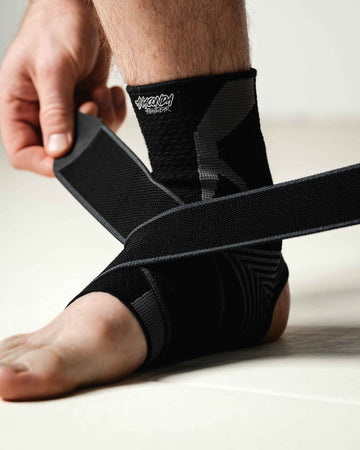



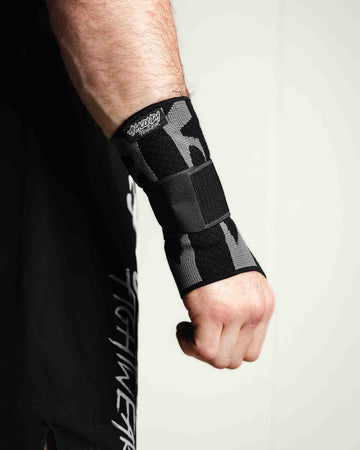

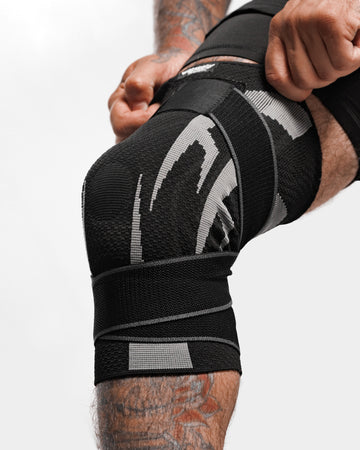



![How Long Does a Knee Injury Take to Heal? [Essential Insights and Tips]](http://anacondafightwear.co/cdn/shop/articles/How_Long_Does_a_Knee_Injury_Take_to_Heal.jpg?v=1764885786&width=533)
